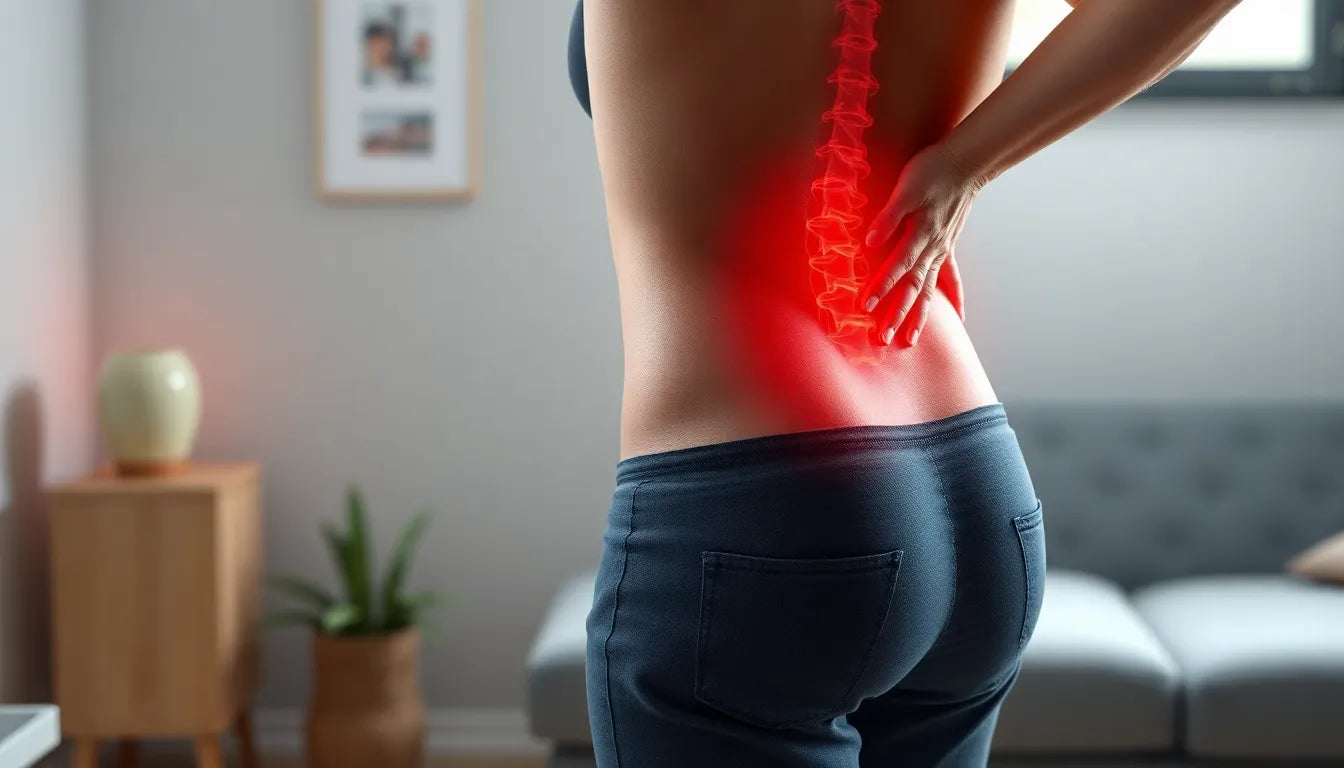Understanding the healing process for a herniated disc is essential for anyone experiencing this common spinal condition. A herniated disc, often referred to as a slipped or ruptured disc, occurs when the soft center of a spinal disc pushes through a crack in the tougher exterior casing. This can lead to symptoms such as back pain, numbness, and tingling sensations, particularly if the herniated disc compresses nearby nerves.
importance of knowing your recovery timeline
Knowing how long it takes for a herniated disc to heal is crucial for setting realistic recovery expectations. Recovery from a herniated disc doesn't happen overnight, and understanding the potential timeline can help patients manage their symptoms and plan their activities accordingly. It also aids in mental preparation, reducing anxiety and frustration that might arise from unrealistic expectations of an immediate recovery.
variation in healing time
It's important to recognize that the healing time for a herniated disc can vary significantly between individuals. Several factors contribute to this variation, including the severity of the herniation, the patient's age and overall health, and the chosen treatment approach. Some people may experience relief within weeks, while others might take several months to fully recover. This variability underscores the importance of personalized medical advice and treatment plans tailored to individual needs.
In the following sections, we will delve deeper into the general healing timeline for herniated discs, explore key factors that can affect recovery duration, and discuss the stages of the healing process. Understanding these elements can empower patients to take an active role in their recovery journey, ensuring they receive the most effective care possible.
understanding the timeline for herniated disc recovery
The journey to recovery from a herniated disc is as unique as the individuals experiencing it. While pain relief is often achieved within 2-8 weeks, the path to complete healing extends beyond mere pain management. According to the Cleveland Clinic, some patients may notice significant symptom improvement in as little as 4-6 weeks. However, for others, the process can extend to 6-12 weeks, with complete healing potentially taking up to six months. In some cases, full reabsorption and resolution of symptoms may require as long as 6-12 months.
factors influencing healing duration
Several key factors can influence the healing time for a herniated disc. Age and overall health play a significant role; younger individuals with robust health tend to recover more quickly. The severity of the herniation is another crucial aspect; larger herniations may require more time for the body to heal. Additionally, an individual’s activity level can impact recovery. Those who maintain a balanced level of physical activity, as advised by healthcare professionals, often experience more favorable outcomes.
The type of treatment approach is also pivotal. Conservative treatments, such as physical therapy, are effective for many, but surgical intervention might be necessary for severe cases. The extent of nerve involvement can further complicate recovery, potentially prolonging the healing timeline if significant nerve compression is present.
stages of the herniated disc healing process
The healing process for a herniated disc can be broken down into distinct phases. In the initial phase, which spans the first few weeks, the primary goal is to reduce inflammation and manage acute symptoms. This phase often involves rest, medication, and gentle physical therapy to alleviate pain and swelling.
Following the initial phase, the tissue repair phase begins, typically lasting from 2 to 12 weeks. During this time, the herniation starts to regress, and the nucleus pulposus—the soft center of the disc—stops exerting pressure on the nerve canal. This phase is crucial for restoring stability and function to the affected area.
The final stage, known as the remodeling phase, can extend over several months. During this period, the focus shifts to strengthening the surrounding muscles and improving flexibility. This phase is vital for preventing future injuries and ensuring long-term spinal health.
emphasizing conservative treatment
Conservative treatment methods are often the first line of defense against herniated disc symptoms. Physical therapy plays a critical role in this approach, helping to strengthen the muscles supporting the spine and improve flexibility. Additionally, these therapies enhance the body’s natural healing mechanisms, promoting disc reabsorption and reducing inflammation.
While surgery may be necessary for some, the majority of patients find relief through non-surgical means. This highlights the importance of early intervention and adherence to prescribed physical therapy regimens, which can significantly influence the overall recovery timeline.
In conclusion, understanding the various factors and phases involved in the healing process of a herniated disc can empower patients to take an active role in their recovery. By recognizing the importance of personalized treatment plans and the potential for conservative methods to facilitate healing, individuals can set realistic expectations and work towards a full recovery with confidence.
Signs of healing: what to expect
Recognizing the signs of healing from a herniated disc can provide reassurance and motivate patients to continue their recovery efforts. As healing progresses, individuals typically experience a noticeable reduction in pain and inflammation. This is often accompanied by improved mobility and flexibility, allowing for a gradual return to normal activities. Additionally, symptoms such as tingling and numbness, which may have radiated down the legs or arms, tend to decrease as the pressure on nerves diminishes.
It's important to note that these improvements may occur gradually and can vary between individuals. Regular check-ins with healthcare providers can help track progress and adjust treatment plans as needed. Patients are encouraged to stay patient and committed to their recovery regimen, as consistency is key to achieving long-term healing.
Understanding the biological healing process
To fully grasp the healing journey of a herniated disc, it's helpful to understand the biological processes involved. When a disc herniates, the body initiates a natural healing response. This involves the reabsorption of the herniated material by the body, which reduces the size of the herniation and alleviates pressure on the nerves. Over time, this process can lead to significant symptom relief and improved function.
During the remodeling phase, which can last several months, the body works to strengthen the muscles surrounding the spine. This not only supports the affected area but also helps prevent future injuries. Engaging in a well-structured physical therapy program can bolster these natural healing mechanisms, promoting a faster and more complete recovery.
Frequently Asked Questions
How long does it take for a herniated disc to heal completely?
The healing timeline for a herniated disc can vary widely, ranging from a few weeks to up to a year. Factors such as the severity of the herniation, the patient's age, overall health, and treatment approach all play a role in determining the duration of recovery.
Can a herniated disc heal without surgery?
Yes, many herniated discs heal effectively with conservative treatment methods. Physical therapy, rest, and sometimes medications are often sufficient to alleviate symptoms and promote healing without the need for surgical intervention.
What are the signs that a herniated disc is healing?
Signs of healing include a reduction in pain and inflammation, improved mobility and flexibility, and a decrease in radiating symptoms such as tingling and numbness. These improvements indicate that the body is effectively managing the herniation.
Are there ways to expedite the healing process?
Maintaining a healthy lifestyle, adhering to a prescribed physical therapy regimen, and using ergonomic aids can all contribute to a more efficient healing process. Staying active within recommended limits and avoiding activities that strain the back are also beneficial.
When should I consider surgery for a herniated disc?
Surgery is typically considered if conservative treatments fail to provide relief after several months, or if the herniated disc causes severe symptoms such as significant weakness, loss of bladder or bowel control, or persistent pain that affects quality of life. Consulting with a healthcare professional can provide guidance on the best course of action.
Sources
- ADR Spine. "How Long Does a Herniated Disc Take to Heal?"
- PMC Article. "Duration of Symptoms Resulting from Lumbar Disc Herniation."
- MoreGoodDays. "Discovering Hope: Can a Herniated Disc Heal After 2 Years?"
- Cleveland Clinic. "Herniated Disk (Slipped or Bulging Disk)."
- HealthCentral. "Herniated Disc Healing: Timeline and Signs of Improvement."
- Barricaid. "How Long Does It Take a Herniated Disc to Reabsorb?"
- Spine-health. "Can Herniated Discs Heal on Their Own?"


















